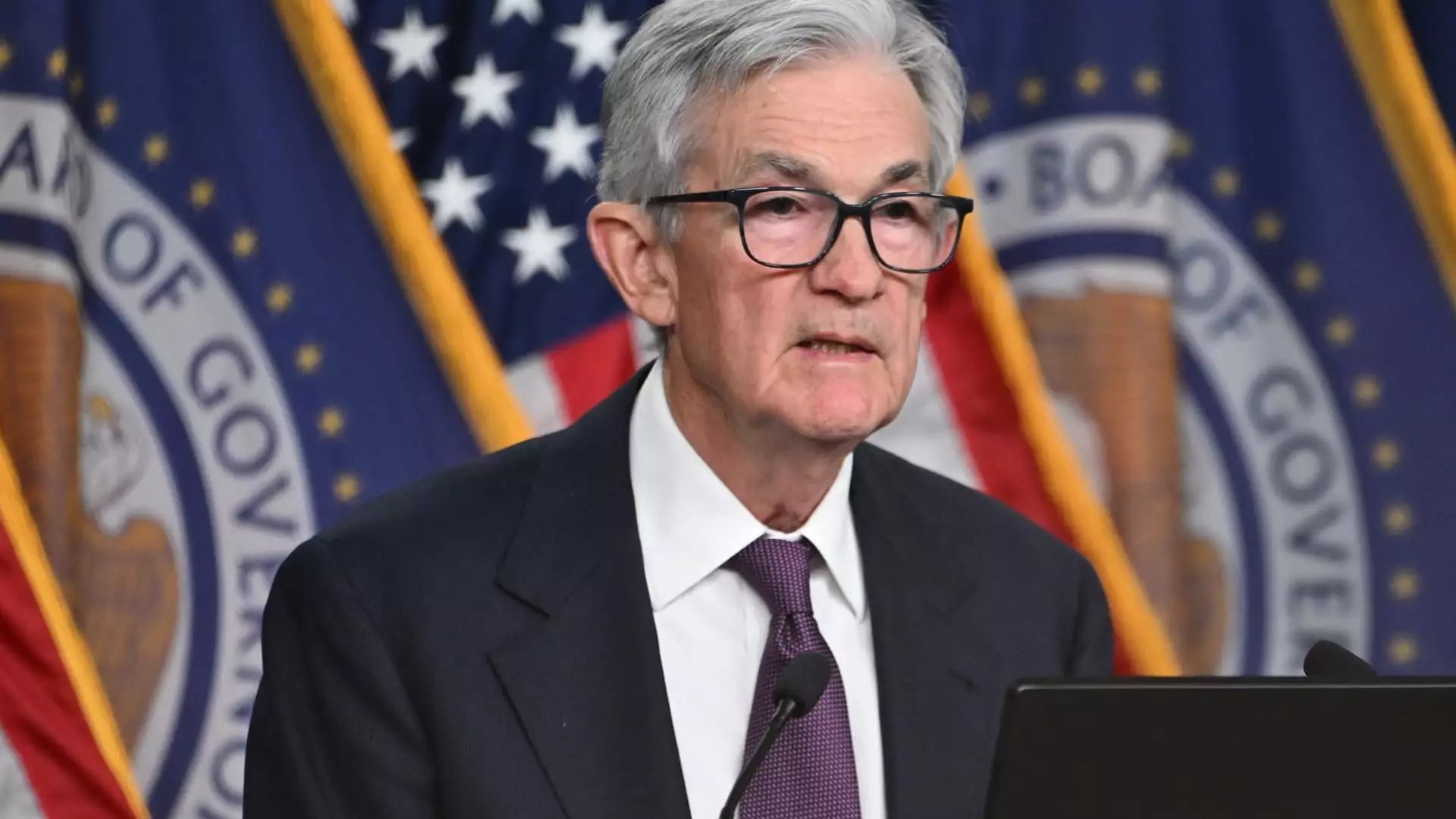In a significant move that marks a pivotal adjustment in monetary policy, the Federal Reserve recently announced a decrease in its key interest rate. The reduction—its third successive cut—signals a cautious approach as the Fed navigates the complexities of the current economic landscape. The deliberations of the Federal Open Market Committee (FOMC) are framed by a backdrop of persistent inflation and tempered economic growth, factors that undoubtedly complicate the central bank’s decision-making process.
On Wednesday, the Federal Reserve lowered the overnight borrowing rate by a quarter percentage point, bringing it to a target range of 4.25% to 4.5%. This is the same level the rates reached in December 2022 before embarking on a tightening trajectory. The rate cut aligns with the expectations within financial markets, yet it also raises questions about the Fed’s strategy moving forward—particularly as inflation remains above target levels despite stable economic growth.
The primary focus of this cut was not merely the action itself but the narrative surrounding it. Chair Jerome Powell emphasized that although the committee made significant changes, they are adopting a cautious stance moving ahead. The updated “dot plot” projection suggests that members anticipate only two more rate cuts in 2025, a noticeable reduction from previous expectations. This shift underscores a more tempered approach, reflecting an awareness of the delicate balance the Fed must maintain in promoting growth without igniting inflation.
Despite the Fed’s decision to lower rates, economic forecasts indicate a mixed picture. The FOMC raised its full-year 2024 Gross Domestic Product (GDP) growth projection to 2.5%, signaling confidence in a robust outlook. However, it also anticipates GDP growth will stabilize around its long-term trend of 1.8% in subsequent years. This duality encapsulates the Fed’s current dilemma: supporting economic growth while being mindful of inflationary pressures.
Interestingly, even with the positive economic indicators, conditions would generally imply a need for either maintaining or increasing rates. The Atlanta Fed recently projected a growth rate of 3.2% for the fourth quarter, while unemployment hovers closer to 4%. Nevertheless, officials remain wary of the economic repercussions of excessively high rates and the potential for an economic downturn. Powell articulated that a careful and measured approach is essential, particularly in light of incoming fiscal policies from the new administration.
The response from financial markets was quite telling following the Fed’s announcement. Stocks experienced a sharp decline, with the Dow Jones Industrial Average dropping over 1,100 points. Concurrently, there was a notable uptick in Treasury yields, suggesting that market participants are recalibrating their expectations regarding future rate cuts. The adjustments in futures pricing indicate a diminished outlook for cuts in the near term, further illustrating the disconnect between Fed policy and market sentiment.
Interestingly, the Fed’s decision appears to have prompted reactions in other areas as well, exemplified by the sharp rise in mortgage rates and Treasury yields. The market’s anticipation surrounding the Fed’s capacity to further reduce rates reflects a growing skepticism about the sustainability of these cuts in the current economic climate.
As the Federal Reserve continues to navigate this intricate economic terrain, it must balance multiple competing priorities. The ongoing tension between curbing inflation and fostering economic growth remains central to its strategy. Powell’s approach reflects a recognition that the current economic conditions do not warrant the same level of restrictiveness as before.
While the committee’s outlook envisages further cuts in the coming years, the actual implementation will depend on evolving economic indicators, including consumer spending, inflation trends, and labor market conditions. As policymakers assess the full impact of their decisions—especially in light of potential fiscal changes—they will need to proceed cautiously to avoid unintended consequences that could harm recovery efforts.
The Federal Reserve’s recent rate cuts represent a pivotal moment in its monetary policy framework. As the committee focuses on recalibrating its approach amidst complex economic signals, the interplay between policy adjustments and market reactions will remain a critical narrative moving forward. The Fed’s commitment to a cautious and measured pace underscores its intent to maintain stability while supporting the ongoing recovery, which will undoubtedly shape economic discussions in the years to come.


Leave a Reply